Cut Off the Screen and Score!
Learning the fundamentals of basketball screen plays is an important part of your offensive skills.
The whole purpose of screening is to free teammates from their defenders. It’s very difficult to stay with a player cutting off a screen. Therefore, setting a good screen is the best way to get your teammates open.
Your opponents are put at a great disadvantage if they switch because the offense will generally gain a height or ability mismatch when this happens. A defensive switch also gives the screener inside positioning to receive a pass.
Below you’ll find information on how to set a screen, how to receive a screen, types of screens and then types of cuts.
By the way, would you like to learn how to dramatically increase your focus on learning these basketball screen plays without ingesting a pill or drink?
Setting A Screen
It’s your responsibility as the screener to get your cutting teammate open for the pass or shot.
Basketball Screen Play Fundamental #1) Assume a Wide Stance
With your feet shoulder-width apart, come to a jump stop. For protection and a reminder to not over-extend, grab or push the defender, put your hands in front of your mid-section.
Basketball Screen Play Fundamental #2) Establish Proper Angle & Hold Screen
Set the screen perpendicular to the expected path of the defender. Set the screen about an arm length’s away from the defender with your back square to the area where the cutter will receive the pass. To hold the screen, be set and ready for contact.
Basketball Screen Play Fundamental #3) React to Defender & Cutter, then “Shape Up”
The player using the screen usually gets open when the defender tries to fight through the screen. The screener will be open when the defenders switch. To “shape up”, turn toward the ball after the screen occurs, get your hands up and be prepared to receive a pass.
Receiving A Screen
It’s your responsibility to drive your defender into the screen when your teammate screens for you.
Basketball Screen Play Fundamental #4) Set Up Defender
Take your defender in a direction opposite that of your intended cut and make a “V” cut prior to using the screen.
Basketball Screen Play Fundamental #5) Wait, then Cut Directly Off Screen
Give the screener time to get set. Be sure not to go too early. Then drive your defender into the screen, making shoulder contact with the screener as you cut.
Basketball Screen Play Fundamental #6) Read Defense & Be Ready for Pass
Read the defender’s position on the floor. The type of cut you make will be dependent upon the floor position of your defensive player. Now you have to get your hands up as you are coming off the screen.
Types of Screens
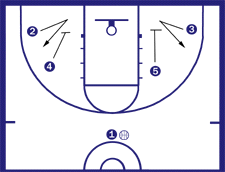
1) Down Screen
This screen is used when an offensive player moves toward the baseline to free an offensive cutter on the perimeter.
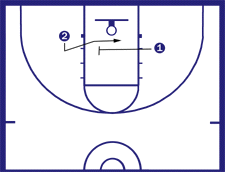
2) Cross Screen
The cross Screen is used when an offensive player moves laterally to set a screen for a teammate in the post area.
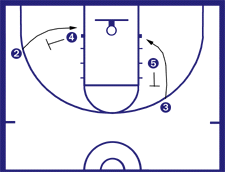
3) Back Screen
This screen is used when an offensive player moves away from the basket to set a screen. The cutter breaks wither over the top or underneath the screen toward the basket. The back screen is used against defenders who are overplaying.
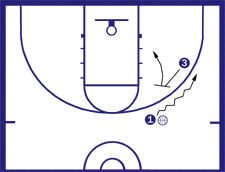
4) Screen on the Ball
This is used to create open shots inside and outside. Screening for the ball handler often creates mismatches in height or speed when defenders switch.
Basic fundamentals for this type of basketball screen play (“screen on the ball”):
When setting the screen:
Assume a wide stance and roll to the basket by pivoting on your inside foot. In order to speed up your turning action, swing your arm and shoulder as you roll. Put a target hand up in the air and never lose sight of the ball.
When using the screen:
To set up your defender, move or fake in a direction opposite that of the screen. As you make your cut, rub shoulders with the screener, keep your head up and read the defense.
Cutting off the Screen

1) Wing Cut
Drive your defender into the screen and then make a hard cut to the perimeter.
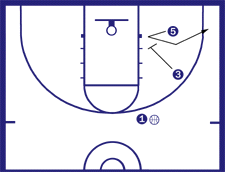
2) Fade Cut
Use this one if your defender sags. Cut away from your defender so you can create more space from that player.
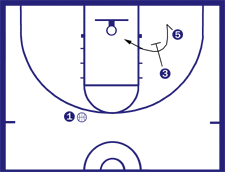
3) Curl Cut
If your defender is behind and trailing, use the curl cut. Curl sharply off the screen toward the basket.
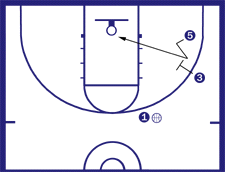
4) Back Cut
Use this when your defender beats the offensive player over the screen. Never lose sight of the ball, push off hard off the floor and make yourself a good target for the ball handler.
